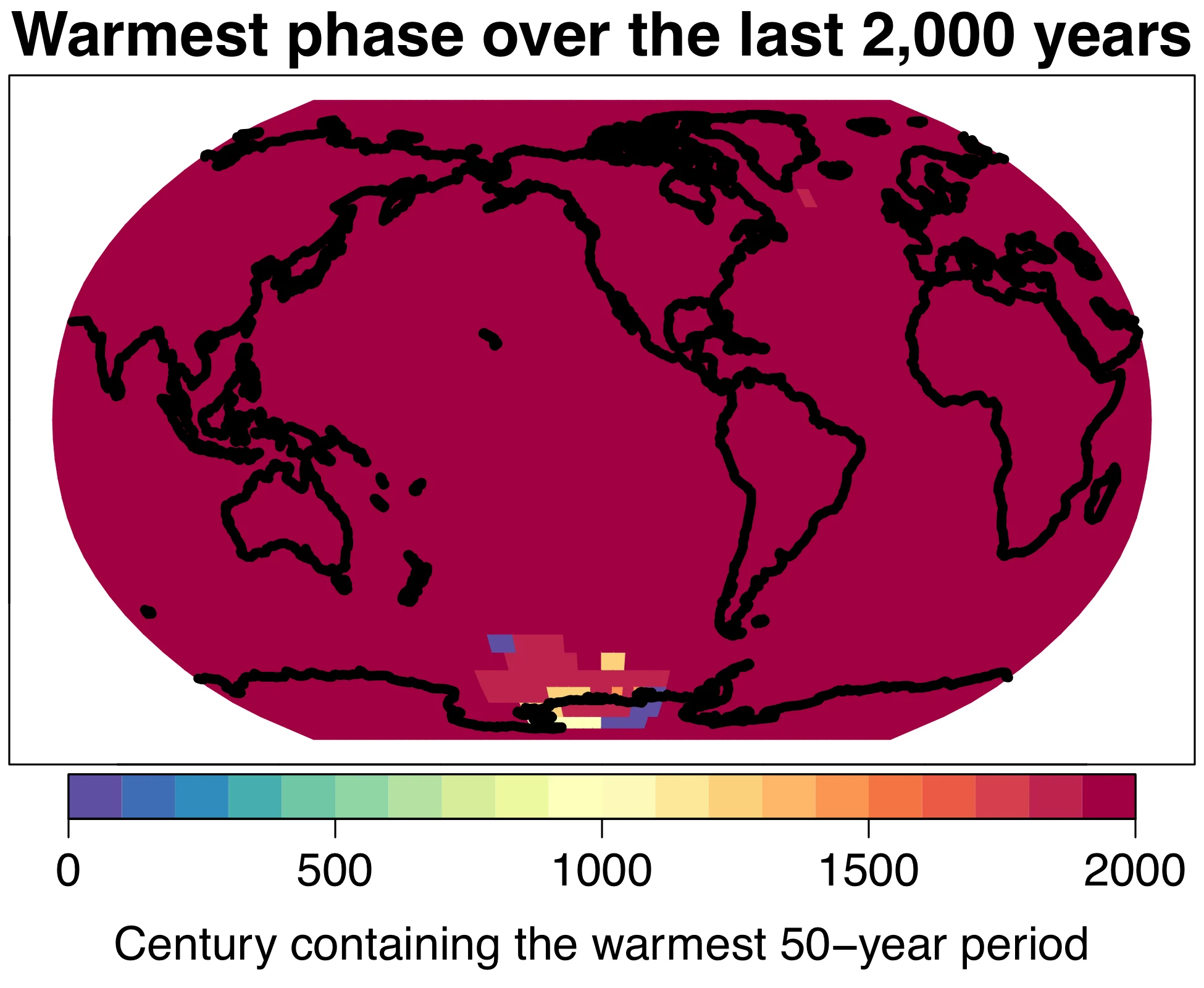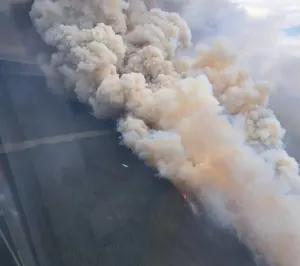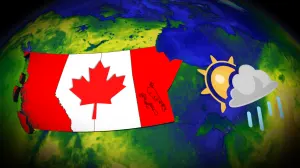
New study shows the last 100 years of warming is not natural
What's Up In Climate Change? The unnatural warming of the past 100 years, contrails increase climate heating, and how Canada should tackle the 'nature emergency'.
According to new research, the warming we are seeing across the planet over the past century is not part of any natural process.
Climate shifts and changes in the last 2000 years, before the last century, have largely been regional, the researchers say.
"In this paper, what we do is look at climate over the past 2,000 years - and traditionally the understanding of climate over this period is that there were globally coherent periods of climate variability," Nathan Steiger, co-author of the paper and an associate researcher at the Lamont-Doherty Earth Observatory at Columbia University, told CBC News. "But what we show is that these periods are not globally coherent, as previously thought."

The cold period which became known as the "Little Ice Age" in Europe and North America was not a global phenomenon; the coldest 50-year period of the last millennium occurred at different times in different regions. Credit: University of Bern
The 'little ice age', as shown in the map above, happened over only a small portion of the globe, and over a relatively short period. As the above map shows, the majority of the planet experienced its coldest 50-year period of the past 2,000 years during the 1800s - prior to the Industrial Revolution. This matches well with the trend of cooling that Earth was experiencing up until humans began burning large quantities of fossil fuels.
The warmest 50-year period of the past 2,000 years, on the other hand, is almost consistent across the entire globe.

Modern global warming is a global phenomenon; the warmest 50-year period of the last 2000 years occurred on more than 98% of Earth’s surface in the 20th century. Credit: University of Bern
According to a University of Bern press release: "This shows - once again - that modern climate change cannot be explained by random fluctuations, but by anthropogenic emissions of CO2 and other greenhouse gases. What we didn’t know until now is that not only average global temperatures in the 20th century are higher than ever before in at least 2,000 years, but also that a warming period is now affecting the whole planet at the same time for the first time. And the speed of global warming has never been as high as it is today."
CONTRAILS ARE WORSE FOR THE CLIMATE THAN WE THOUGHT
Emissions from jet airliners are contributing to climate change, and this is only expected to increase as air traffic increases, year by year. A new study is now pointing to the climate impacts of another byproduct of air travel - contrails.
Contrails are thin, straight-line clouds that form behind aircraft as they fly through the air, as shown in the video above, recorded by Sean Thompson in January 2016.
Any cloud that forms does so because the air temperature reaches the 'dew point', which is when water vapour condenses onto 'cloud condensation nuclei', such as ash, dust, pollen and soot. The air temperature can reach the dew point either by the air cooling, due to the pressure dropping as the air rises or by coming into contact with a cold surface, or the dew point temperature rising as more water vapour is added to the air. Clouds can also form suddenly when condensation nuclei are added to air that is 'supercooled' - it is cold enough for water vapour to condense, but there is nothing for it to condense onto.
Jets typically cause one or more of these changes as they fly through the air. Burning fuel releases both water vapour and particles behind the engines, thus raising the dew point and adding cloud condensation nuclei. The wings and engines produce swirling vortices that trail behind the plane, and the air on the rising side of these vortices can result in the pressure drop that leads to cooling and condensation.
At the heights aircraft fly, the condensing water typically freezes into ice crystals, producing very bright but thin clouds. If they form in very dry air, or the descending air of a high pressure dome, they will not last long, sublimating directly back into vapour. With more humid conditions or rising air, they last longer, and can even merge and spread out into wide swaths of thin, wispy cirrus.

Contrails have an influence on the climate, because of how high thin cirrus clouds impact the heat balance of the planet. They are typically too thin to reflect much sunlight back into space, as the tops of thicker clouds do, but they are still good at trapping the heat being emitted by Earth's surface. The effect of the contrails is small compared to the impact of carbon emissions, and it is localized over high-air traffic regions such as the United States and Europe, but it's still noticeable.
With air traffic on the increase, and generally warming global temperatures adding more water vapour to the atmosphere, we are going to see more and more contrails in the sky, and this is going to result in a greater contribution to the warming.
According to the Bulletin of Atomic Scientists: "Those wispy stripes left behind by airplanes have a surprisingly forceful, albeit short-lived, effect on the climate. After accounting for factors such as aircraft improvements that are expected to reduce soot emissions, climate researchers at the German Aerospace Center recently estimated that the heat-trapping effects of cirrus cloudiness caused by contrails will 'increase significantly over time' because of the large projected increases in air traffic - which is growing so fast that efforts to make airplanes less polluting won’t be able to keep up with the growing effects of contrail clouds."
What is the solution to this? In addition to increasing fuel efficiency for jets to reduce their greenhouse gas emissions, ways must be found to minimize contrail production. To do this, limiting the amount of soot produced by aircraft engines seems to be the most effective approach, but it appears as though removing even 90 per cent of soot particles would still not be enough to eliminate the growing problem.
CANADA NEEDS TO PROTECT HALF OF ITS LAND AND WATER
The planet is in a biodiversity crisis and a new report from the Canadian Parks and Wilderness Society says the government of Canada needs to move quickly to protect hundreds of millions of hectares of land from development.
As CBC News' John Paul Tasker reports: "The report says biodiversity is declining faster than at any other time in human history — over one million species worldwide are facing extinction, according to a recent, groundbreaking study. It argues Canada must adopt aggressive measures beyond current targets by promising to protect and restore 30 per cent of all the country's land and inland waters by 2030 — about 330 million hectares.
That proposed goal would almost triple the amount of land currently protected through measures by federal, provincial and Indigenous governments. As of 2019, 11.8 per cent of Canada's land mass had been set aside for conservation.
But the advocacy group says Canada shouldn't stop at 30 per cent — that it should commit to protecting half the country's landmass from development (including extractive industries like logging and oil and gas) at some point over the next century."
According to CPAWS, the report presents a 10-step plan that Canada can follow to become "a true global conservation leader and effectively conserve nature at home."
This includes completing existing protected area proposals, championing conservation targets that are science-based and Indigenous knowledge-based, providing incentives for natural climate change solutions, and partnering with Indigenous Peoples.
"The evidence is clear that protecting and restoring much more habitat needs to be the foundation of our efforts to save nature, which is also critical to our own future well-being," Anna Pidgorna, Senior Conservation Coordinator for CPAWS, said in a press release. "Protecting and restoring at least half of the landscape in well-designed and managed conservation networks is the most reliable way to ensure that Canada's, and the world's, nature and wildlife will endure."
Sources: Bulletin of the Atomic Scientists | CBC | University of Bern | CBC











